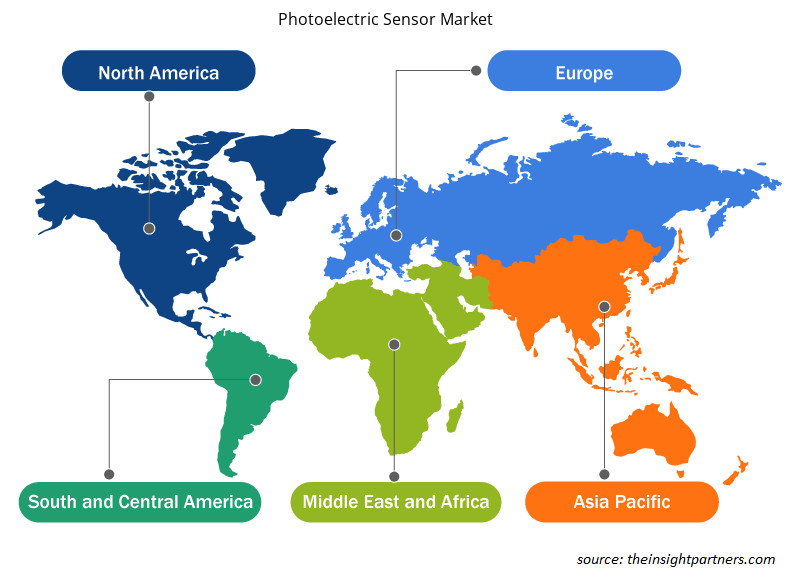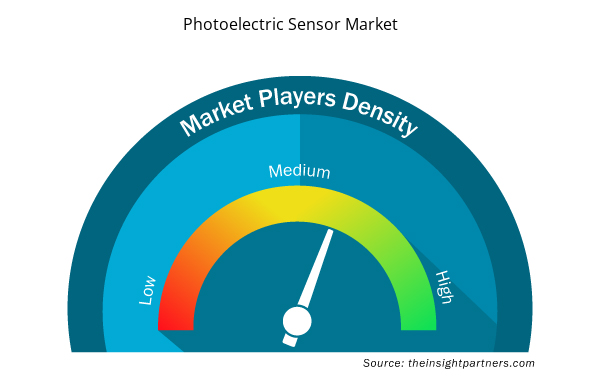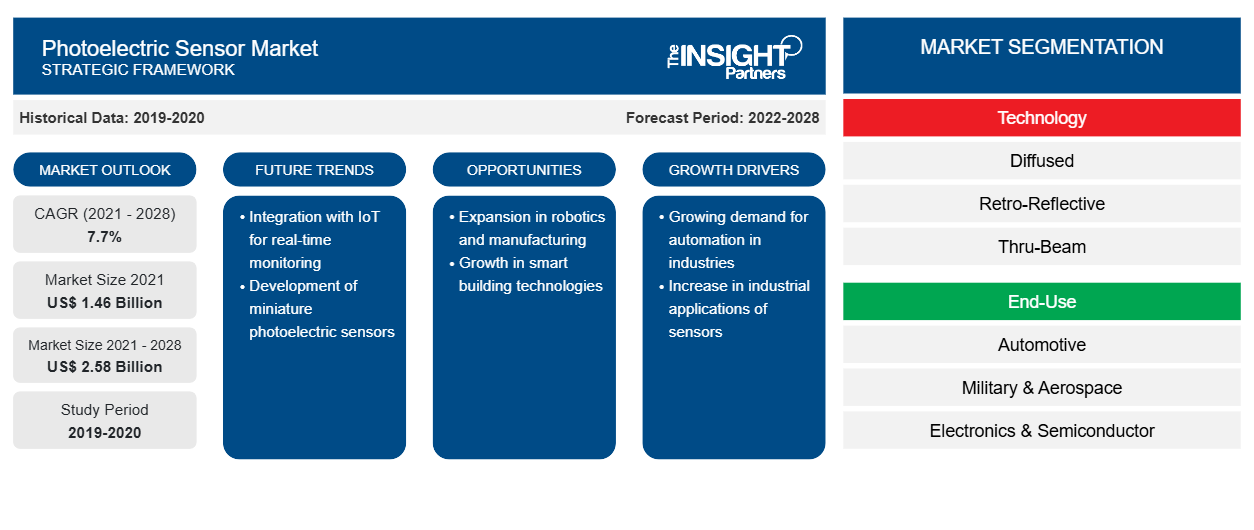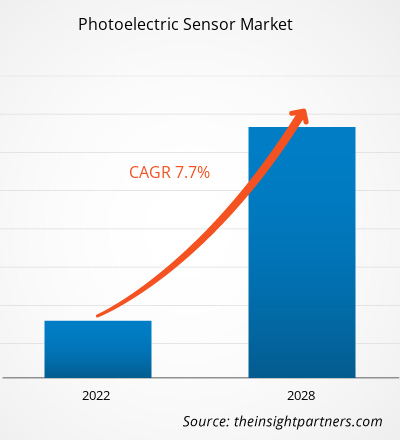[研究报告] 2021年光电传感器市场价值为14.5823亿美元,预计到2028年将达到25.7756亿美元;预计2021年至2028年的复合年增长率为7.7%。
光电传感器因其高可靠性和远距离物体检测能力而越来越受欢迎,无论物体的大小、形状、颜色、材料和表面特性如何。这些传感器设计用于在恶劣条件下工作;此外,它们采用先进技术,确保可靠地抑制不良反射。这些能力使它们比许多其他类型的传感器更加通用,适合工业用途。例如,带有偏振滤光片的反射式传感器可以检测任何形状和材料的车厢的位置,这些车厢要保持在过山车的轨道上和轨道外。此外,光电传感器因其高精度和可靠的性能而被广泛应用于军事和航空航天工业。它们用于货机的烟雾和火灾探测。此外,光电传感器可帮助机身和发动机制造商监测航空航天系统参数,如压力、温度、加速度、光学位置和速度。此外,国防工业广泛使用生物检测设备来检测环境中化学物质的存在,并通过检测有害生物材料来评估潜在生物威胁的风险,以保护军人和平民。因此,光电传感器操作的准确性和可靠性使其成为恶劣工业条件下的首选传感器类型。
COVID-19 疫情对光电传感器市场的影响
根据世界卫生组织(WHO)的最新报告,美国、西班牙、意大利、法国、德国、英国、俄罗斯、土耳其、巴西、伊朗和中国是受COVID-19疫情影响最严重的国家。2020年,世界经济遭受了重大影响,预计这种影响将在未来几年持续一段时间。疫情扰乱了电子、半导体和制造业等主要产业。这些行业增长的急剧下降限制了光电传感器市场的增长。为抗击和控制感染而实施的工厂关闭、旅行和贸易禁令以及边境封锁对各种传感器产品的制造、供应和销售产生了负面影响。
定制此报告以满足您的需求
您可以免费定制任何报告,包括本报告的部分内容、国家级分析、Excel 数据包,以及为初创企业和大学提供优惠和折扣
- 获取此报告的关键市场趋势。这个免费样品将包括数据分析,从市场趋势到估计和预测。
光电传感器制造商正致力于降低运营成本以保持竞争力。不过,预计他们将在封锁结束后恢复生产活动。政府提振经济的举措和封锁放松预计将在预测期内刺激对光电传感器的需求。随着新技术在汽车和航空航天工业中的广泛应用,对光电传感器的需求可能会扩大。
光电传感器市场洞察
制药行业对光电传感器的需求不断增长推动光电传感器市场的增长
制药公司专注于改善整体制造流程,避免因生产线上药片短缺而导致的空包装等差异。该行业越来越多地部署光电传感器进行药片计数、瓶子灌装和计数验证(在临床试验中)。这些传感器还用于零售药店和医院的自动处方机。此外,光电传感器在传感范围方面的进步提高了计数精度,同时通过在药品包装过程中排除人为接触来保持卫生的生产环境,这些都是光电传感器的优势。此外,光电传感器提供了一种经济高效的解决方案,这是通过制药行业的自动生产线实现的。因此,
制药公司光电传感器应用的激增主要归因于它们能够提高效率、降低行业运营成本并促进实时生产监控。这些传感器可自动测量罐或罐中液体的上部和下部。制药公司经常使用强腐蚀性化学品(酸性或碱性),因此,检测储罐中的液位是这些工厂的一项重要任务。因此,制药行业光电传感器的使用增加将推动未来几年光电传感器市场的增长。
基于技术的市场洞察
根据技术,光电传感器市场分为漫反射式、反射式和直通式。2020 年,反射式部分占据了市场的最大份额。
基于最终用户的市场洞察
根据最终用户,光电传感器市场细分为汽车、军事和航空航天、电子和半导体、封装等。2020 年,汽车领域占据了最大的市场份额。
光电传感器市场的参与者采用合并、收购和市场计划等策略来保持其在市场中的地位。以下列出了一些主要参与者的发展:
- 2020 年 4 月,巴鲁夫光电传感器提供了状态监测数据。智能自动化和监控系统 (SAMS) 产品组合包括固体光电传感、状态监测和先进的 IO-link 技术,所有这些技术都旨在通过简化故障排除、转换和机器设置来节省停机时间。
- 2020年2月,伊顿公司被《财富》杂志列为2020年全球最受尊敬公司之一。
光电传感器市场区域洞察
Insight Partners 的分析师已详细解释了预测期内影响光电传感器市场的区域趋势和因素。本节还讨论了北美、欧洲、亚太地区、中东和非洲以及南美和中美洲的光电传感器市场细分和地理位置。

- 获取光电传感器市场的区域特定数据
光电传感器市场报告范围
| 报告属性 | 细节 |
|---|---|
| 2021 年市场规模 | 14.6亿美元 |
| 2028 年市场规模 | 25.8亿美元 |
| 全球复合年增长率(2021 - 2028) | 7.7% |
| 史料 | 2019-2020 |
| 预测期 | 2022-2028 |
| 涵盖的领域 | 按技术分类
|
| 覆盖地区和国家 | 北美
|
| 市场领导者和主要公司简介 |
|
市场参与者密度:了解其对商业动态的影响
光电传感器市场正在快速增长,这得益于终端用户需求的不断增长,而这些需求又源于消费者偏好的不断变化、技术进步以及对产品优势的认识不断提高等因素。随着需求的增加,企业正在扩大其产品范围,进行创新以满足消费者的需求,并利用新兴趋势,从而进一步推动市场增长。
市场参与者密度是指在特定市场或行业内运营的企业或公司的分布情况。它表明在给定市场空间中,相对于其规模或总市场价值,有多少竞争对手(市场参与者)存在。
在光电传感器市场运营的主要公司有:
- 奥托尼克斯公司
- 巴鲁夫有限公司
- 伊顿公司
- 易福门电子有限公司
- 基恩士公司
免责声明:上面列出的公司没有按照任何特定顺序排列。

- 了解光电传感器市场主要参与者概况
全球光电传感器市场细分如下:
按技术分类
- 扩散
- 逆反射
- 对射式
按最终用户
- 汽车
- 军事和航空航天
- 电子和半导体
- 包装
- 其他的
按地理位置
- 北美
- 我们
- 加拿大
- 墨西哥
- 欧洲
- 法国
- 德国
- 意大利
- 英国
- 俄罗斯
- 欧洲其他地区
- 亚太地区 (APAC)
- 中国
- 印度
- 韩国
- 日本
- 澳大利亚
- 亚太地区其他地区
- 中东和非洲 (MEA)
- 南非
- 沙特阿拉伯
- 阿联酋
- MEA 其他地区
- 南美洲 (SAM)
- 巴西
- 阿根廷
- SAM 其余部分
公司简介
- 奥托尼克斯公司
- 巴鲁夫有限公司
- 伊顿公司
- 易福门电子有限公司
- 基恩士公司
- 欧姆龙公司
- 罗克韦尔自动化公司
- 松下公司
- 施克公司
- 施耐德电气
- 历史分析(2 年)、基准年、预测(7 年)及复合年增长率
- PEST 和 SWOT 分析
- 市场规模价值/数量 - 全球、区域、国家
- 行业和竞争格局
- Excel 数据集


- Online Exam Proctoring Market
- Data Center Cooling Market
- Foot Orthotic Insoles Market
- Enzymatic DNA Synthesis Market
- Microplate Reader Market
- Artificial Intelligence in Defense Market
- Fish Protein Hydrolysate Market
- Pressure Vessel Composite Materials Market
- Greens Powder Market
- Smart Grid Sensors Market

Report Coverage
Revenue forecast, Company Analysis, Industry landscape, Growth factors, and Trends

Segment Covered
This text is related
to segments covered.

Regional Scope
North America, Europe, Asia Pacific, Middle East & Africa, South & Central America

Country Scope
This text is related
to country scope.
常见问题
The rising need for of sensors and technological developments to solve complex challenges is encouraging innovations in photoelectric sensors. The pulse ranging technology (PRT), which can calculate object’s distance by using the principal of direct light propagation time measurement method, can be valuable in commercial industrial applications. PRT sensors provide accurate and continuous distance data with digital or analog outputs. In addition, positioning PRT sensors on each side of the carton and measuring these distances would also provide dimensions of pallets or cartons, which can be used to calculate the volume of the pallet or carton. The technology is expected to further improve the efficiency and accuracy of line assembly by providing comprehensive details of materials in production or operational process.
The growth of the Photoelectric Sensor market is primarily attributed to the accuracy and reliability of photoelectric sensors. Photoelectric sensors are gaining popularity due to their high reliability and long-range object detection capabilities, irrespective of the size, shape, color, material, and surface properties of objects. These sensors are designed to operate under harsh conditions; moreover, they are enabled with advanced technologies to ensure reliable suppression of undesirable reflections. These abilities makes them more versatile than many other sensor types and appropriate for industrial usage.
Rising demand for photoelectric sensors in pharmaceuticals industry is providing noteworthy opportunities to the Photoelectric Sensor market players. Pharmaceutical companies focus on improving their overall manufacturing operations by avoiding discrepancies such as empty packaging, which can be caused due to the unavailability of medicine tablets on the production line. The industry is increasingly deploying photoelectric sensors for tablet counting, bottle filling, and count verification (in clinical trials). These sensors are also being used in automated prescription fulfillment machines at retail pharmacies and hospitals.
Trends and growth analysis reports related to Electronics and Semiconductor : READ MORE..
The List of Companies - Photoelectric Sensor Market
- Autonics Corporation
- Balluff GmbH
- Eaton Corporation plc
- Ifm Electronic GmbH
- Keyence Corporation
- OMRON Corporation
- Rockwell Automation, Inc.
- Panasonic Corporation
- SICK AG
- Schneider Electric SE
The Insight Partners performs research in 4 major stages: Data Collection & Secondary Research, Primary Research, Data Analysis and Data Triangulation & Final Review.
- Data Collection and Secondary Research:
As a market research and consulting firm operating from a decade, we have published and advised several client across the globe. First step for any study will start with an assessment of currently available data and insights from existing reports. Further, historical and current market information is collected from Investor Presentations, Annual Reports, SEC Filings, etc., and other information related to company’s performance and market positioning are gathered from Paid Databases (Factiva, Hoovers, and Reuters) and various other publications available in public domain.
Several associations trade associates, technical forums, institutes, societies and organization are accessed to gain technical as well as market related insights through their publications such as research papers, blogs and press releases related to the studies are referred to get cues about the market. Further, white papers, journals, magazines, and other news articles published in last 3 years are scrutinized and analyzed to understand the current market trends.
- Primary Research:
The primarily interview analysis comprise of data obtained from industry participants interview and answers to survey questions gathered by in-house primary team.
For primary research, interviews are conducted with industry experts/CEOs/Marketing Managers/VPs/Subject Matter Experts from both demand and supply side to get a 360-degree view of the market. The primary team conducts several interviews based on the complexity of the markets to understand the various market trends and dynamics which makes research more credible and precise.
A typical research interview fulfils the following functions:
- Provides first-hand information on the market size, market trends, growth trends, competitive landscape, and outlook
- Validates and strengthens in-house secondary research findings
- Develops the analysis team’s expertise and market understanding
Primary research involves email interactions and telephone interviews for each market, category, segment, and sub-segment across geographies. The participants who typically take part in such a process include, but are not limited to:
- Industry participants: VPs, business development managers, market intelligence managers and national sales managers
- Outside experts: Valuation experts, research analysts and key opinion leaders specializing in the electronics and semiconductor industry.
Below is the breakup of our primary respondents by company, designation, and region:

Once we receive the confirmation from primary research sources or primary respondents, we finalize the base year market estimation and forecast the data as per the macroeconomic and microeconomic factors assessed during data collection.
- Data Analysis:
Once data is validated through both secondary as well as primary respondents, we finalize the market estimations by hypothesis formulation and factor analysis at regional and country level.
- Macro-Economic Factor Analysis:
We analyse macroeconomic indicators such the gross domestic product (GDP), increase in the demand for goods and services across industries, technological advancement, regional economic growth, governmental policies, the influence of COVID-19, PEST analysis, and other aspects. This analysis aids in setting benchmarks for various nations/regions and approximating market splits. Additionally, the general trend of the aforementioned components aid in determining the market's development possibilities.
- Country Level Data:
Various factors that are especially aligned to the country are taken into account to determine the market size for a certain area and country, including the presence of vendors, such as headquarters and offices, the country's GDP, demand patterns, and industry growth. To comprehend the market dynamics for the nation, a number of growth variables, inhibitors, application areas, and current market trends are researched. The aforementioned elements aid in determining the country's overall market's growth potential.
- Company Profile:
The “Table of Contents” is formulated by listing and analyzing more than 25 - 30 companies operating in the market ecosystem across geographies. However, we profile only 10 companies as a standard practice in our syndicate reports. These 10 companies comprise leading, emerging, and regional players. Nonetheless, our analysis is not restricted to the 10 listed companies, we also analyze other companies present in the market to develop a holistic view and understand the prevailing trends. The “Company Profiles” section in the report covers key facts, business description, products & services, financial information, SWOT analysis, and key developments. The financial information presented is extracted from the annual reports and official documents of the publicly listed companies. Upon collecting the information for the sections of respective companies, we verify them via various primary sources and then compile the data in respective company profiles. The company level information helps us in deriving the base number as well as in forecasting the market size.
- Developing Base Number:
Aggregation of sales statistics (2020-2022) and macro-economic factor, and other secondary and primary research insights are utilized to arrive at base number and related market shares for 2022. The data gaps are identified in this step and relevant market data is analyzed, collected from paid primary interviews or databases. On finalizing the base year market size, forecasts are developed on the basis of macro-economic, industry and market growth factors and company level analysis.
- Data Triangulation and Final Review:
The market findings and base year market size calculations are validated from supply as well as demand side. Demand side validations are based on macro-economic factor analysis and benchmarks for respective regions and countries. In case of supply side validations, revenues of major companies are estimated (in case not available) based on industry benchmark, approximate number of employees, product portfolio, and primary interviews revenues are gathered. Further revenue from target product/service segment is assessed to avoid overshooting of market statistics. In case of heavy deviations between supply and demand side values, all thes steps are repeated to achieve synchronization.
We follow an iterative model, wherein we share our research findings with Subject Matter Experts (SME’s) and Key Opinion Leaders (KOLs) until consensus view of the market is not formulated – this model negates any drastic deviation in the opinions of experts. Only validated and universally acceptable research findings are quoted in our reports.
We have important check points that we use to validate our research findings – which we call – data triangulation, where we validate the information, we generate from secondary sources with primary interviews and then we re-validate with our internal data bases and Subject matter experts. This comprehensive model enables us to deliver high quality, reliable data in shortest possible time.


 获取此报告的免费样本
获取此报告的免费样本